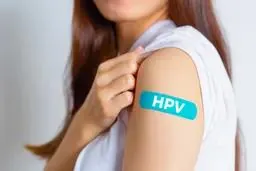
Major Public Health Breakthrough: Panama's Shift to 9-Valent HPV Vaccination Program
2024-11-11
Author: Mei
Major Public Health Breakthrough: Panama's Shift to 9-Valent HPV Vaccination Program
In a groundbreaking presentation at the IDWeek 2024 conference, researchers unveiled a pivotal study addressing the immense public health advantages of Panama's transition from a 4-valent (4vHPV) to a 9-valent human papillomavirus (9vHPV) vaccination program. This strategic shift aims to significantly diminish the incidence of HPV-related cancers and diseases over the next century by broadening the vaccination coverage to include five additional HPV strains.
The Journey So Far
Since launching its HPV vaccination initiative in 2008—initially targeting 10-year-old girls—Panama has taken monumental steps towards cancer prevention. By 2016, the country had adopted a gender-neutral quadrivalent HPV vaccination program (GNV) to protect both girls and boys. The move was revolutionary for HPV prevention; however, health officials are now optimistic that the transition to a 9-valent vaccine could unlock even greater health benefits. The nonavalent vaccine expands the protection against HPV genotypes 31, 33, 45, 52, and 58, which are known to be significant contributors to various cancers.
Study Objectives and Methodology
The study's primary focus was to quantify the public health benefits of switching to a 9vHPV program for 10-year-olds throughout Panama. Using a dynamic health model tailored to local infection rates and disease progression, researchers simulated the impact of sustaining high vaccination coverage over a century. The model accounted for lifelong immunity following a two-dose regimen and projected various health outcomes, such as the number of cervical and other cancers that could be prevented.
Astounding Projections
The findings herald a promising future: the 9-valent HPV vaccination program is set to deliver more rapid and substantial reductions in the incidence of HPV-related diseases compared to the existing 4-valent program. Noteworthy forecasts include: - A staggering **16.5% decrease** in cervical cancer incidences. - A potential **30% reduction** in high-grade cervical lesions (CIN2/3). - A remarkable **43.8% drop** in low-grade cervical lesions (CIN1). Furthermore, the study indicates a reduction in other HPV-associated cancers, suggesting: - A **7% decrease** in anal cancer among females and **4.5% among males**. - An expected **7.7% drop** in penile cancer cases while head and neck cancers could see reductions of **3.5% in females and 1.4% in males**. In total, it's projected that the 9vHPV program could prevent **approximately 3,231 cancer cases** and avert **1,798 deaths** within the next century, predominantly due to cervical cancer prevention.
Challenges and Considerations
Despite these optimistic projections, the study underscores potential obstacles. The projections hinge on maintaining high vaccination coverage rates—which may prove difficult in practice. Additionally, the research did not incorporate advancements in cervical cancer screening that could further influence the outcomes.
A Step Towards Healthier Generations
The implications of transitioning to a 9-valent HPV vaccination program in Panama are profound, particularly in reducing the prevalence of cervical cancer. This improved vaccination strategy offers enhanced protection for both genders, reinforcing Panama's commitment to combating HPV-related diseases. As the country looks ahead, this study serves as an essential call to action for policymakers, healthcare providers, and public health advocates to invest in expansive vaccination initiatives and HPV prevention strategies. Not only could Panama emerge as a leader in the region, but it also sets a precedent for other nations to follow, ensuring healthier futures for generations to come.
Stay tuned for more updates on this transformative program and related health initiatives!



 Brasil (PT)
Brasil (PT)
 Canada (EN)
Canada (EN)
 Chile (ES)
Chile (ES)
 España (ES)
España (ES)
 France (FR)
France (FR)
 Hong Kong (EN)
Hong Kong (EN)
 Italia (IT)
Italia (IT)
 日本 (JA)
日本 (JA)
 Magyarország (HU)
Magyarország (HU)
 Norge (NO)
Norge (NO)
 Polska (PL)
Polska (PL)
 Schweiz (DE)
Schweiz (DE)
 Singapore (EN)
Singapore (EN)
 Sverige (SV)
Sverige (SV)
 Suomi (FI)
Suomi (FI)
 Türkiye (TR)
Türkiye (TR)